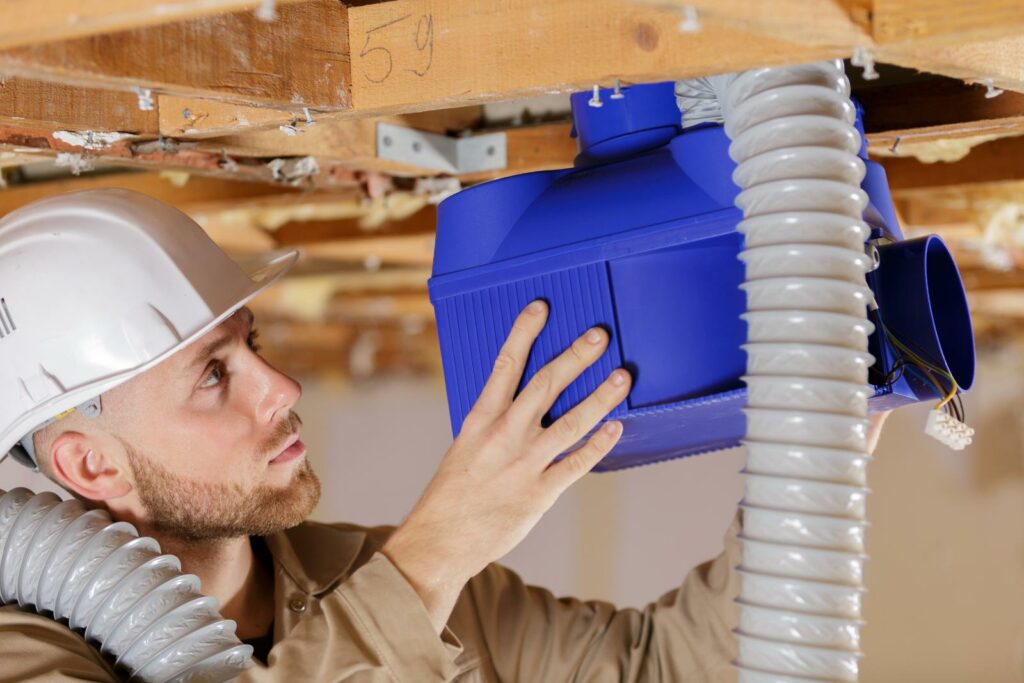
Contents
When considering the insulation of your attic space, it’s wise to pay attention to a few essential aspects. Starting with safety measures is vital, but more tips can make a significant difference in the efficiency of your insulation. By understanding the importance of ventilation, you can guarantee a successful installation that provides thermal protection and contributes to a healthier living environment. So, let’s begin by exploring the nuances of DIY attic insulation and how you can enhance your efforts for a more comfortable home.
Key Takeaways
- Prioritize safety: wear appropriate gear and use a stable platform.
- Ensure proper ventilation: prevent moisture buildup during installation.
- Watch out for hazards: sharp edges and exposed nails in the attic.
- Thoroughly cover all areas: avoid compressing the insulation material.
- Take time for proper installation: maximize insulation effectiveness.
Choosing the Right Insulation Material
When considering the most suitable insulation material for your attic, take into account the R-value, durability, and moisture resistance of each option.
The first aspect to assess is the cost comparison between different insulation materials. Fiberglass insulation is typically the most budget-friendly option, while spray foam tends to be pricier but offers superior insulation properties and energy efficiency in the long run. Reflective insulation, on the other hand, falls somewhere in the middle in relation to cost.
Next, let’s explore the environmental impact of the insulation materials. Fiberglass insulation is made from recycled glass and sand, making it a relatively eco-friendly choice. However, the manufacturing process does involve significant energy consumption.
Although highly effective at sealing air leaks and reducing energy waste, spray foam can have a more substantial environmental impact due to the chemicals used in its production. Reflective insulation is often considered environmentally friendly as it reflects heat rather than absorbing it, reducing the need for excessive energy consumption for cooling purposes.
Preparing the Attic Space
Evaluate the condition of your attic space to make sure it’s adequately prepared for the insulation installation process. Start by clearing clutter to create a clean and organized working environment. Remove any boxes, old furniture, or debris that may obstruct the installation or reduce the effectiveness of the insulation. Ensure that the attic floor is free from any obstructions to allow easy movement during installation.
Next, focus on ensuring ventilation within the attic space. Important ventilation is vital to prevent moisture buildup, which can lead to mold growth and decreased insulation efficiency. Check for existing vents and make sure they’re unblocked and functioning correctly. Consider installing additional vents if needed to improve air circulation and regulate the temperature in the attic.
Inspect the attic for any signs of water leaks or damage. Address any issues promptly to prevent future problems with the insulation. Additionally, check for any pest infestations and take necessary measures to eliminate them before proceeding with the insulation installation.
Installing Insulation Safely
Before beginning the insulation installation process in your attic, prioritize your safety by following these guidelines. Safety precautions are vital when working in an attic space to prevent accidents and guarantee a successful insulation installation. To protect yourself, wear appropriate safety gear such as gloves, goggles, and a mask to shield against any potential irritants present in older insulation materials. Additionally, make sure to have a stable platform, such as a sturdy ladder, to move around safely in the attic.
Proper ventilation is essential during the insulation installation process to maintain a healthy environment and prevent the buildup of harmful fumes or particles. Before starting, ensure enough ventilation in the attic to allow for proper air circulation. This can involve opening windows or using exhaust fans to help dissipate any airborne particles released during the insulation installation.
When handling insulation materials, be cautious of potential hazards like sharp edges or exposed nails in the attic. Take your time to install the insulation properly, ensuring to cover all areas thoroughly while avoiding compressing the material, which can reduce its effectiveness.
Final Thoughts
Proper attic insulation can greatly reduce energy costs and improve home comfort.
So, take the time to follow these essential installation tips and enjoy the long-term benefits of a well-insulated attic.
Recent Posts
Top Attic Air Sealing Techniques for Insulation
Have you ever considered how much energy might be wasted through unnoticed gaps in your
Top 10 Attic Air Sealing Techniques for Insulation
Just as a tightly sealed ship avoids leaks and remains buoyant, your attic’s air sealing
What Are the Best Attic Air Sealing Techniques?
When it comes to attic air sealing, understanding the common leakage points is vital for

